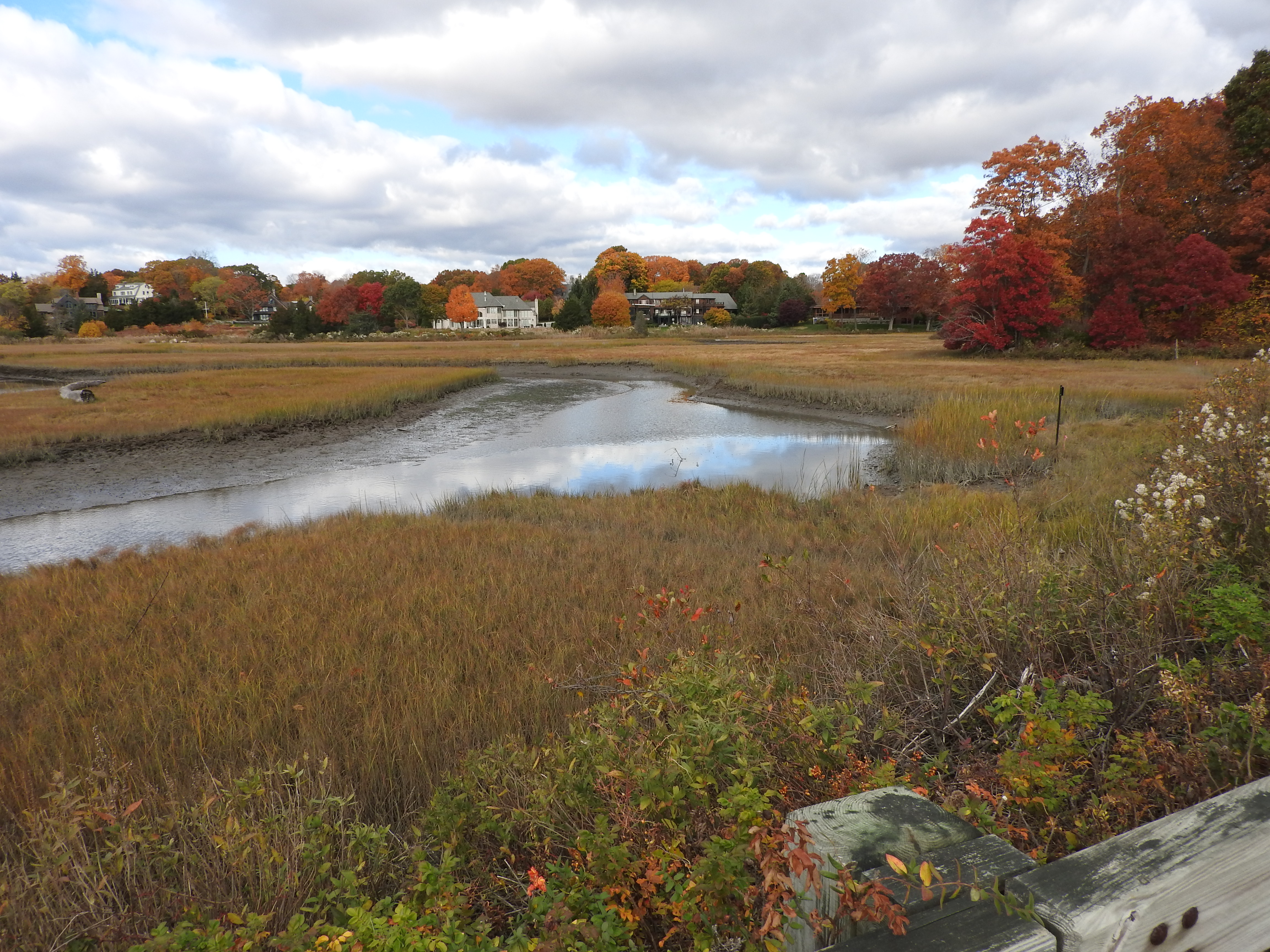Vulnerable marshes, vulnerable homes

Fence Creek in Madison, Conn., is one of many tidal marshes near neighborhoods vulnerable to sea level rise. (Photo by Chris Elphick.)
While popular with conservation groups, coastal easements that prevent development in order to protect marshland are not favored by property owners, according to a new study by the University of Connecticut and Virginia Tech. Since private landowners will be critical partners in efforts to save coastal marshes in the face of climate change and rising sea levels, identifying the best strategies will be essential to achieving success, the research shows. The study was funded by Connecticut Sea Grant, UConn, the Connecticut Department of Energy and Environmental Protection and the Robert and Patricia Switzer Foundation Environmental Fellowship.
The findings, based on the results of surveys conducted in 2015 of 1,002 owners of Connecticut coastal properties, suggest that relying on education about sea level rise and the ecosystem benefits of marshes alone will not protect land from changes brought about by storms and climate change. Landowners in the study harbor skeptical attitudes about granting easements, based on concerns that they will be offered a fair price in exchange for keeping land as open space where marshes can migrate as seas rise. They also worry that environmental organizations that obtain the easements “might not act fairly or transparently in their efforts to encourage tidal marsh migration,” the researchers write in an article published in the online edition of the Proceedings of the National Academy of Sciences during the week of Aug. 7.
The study, conducted by Christopher Field and Chris Elphick of UConn and Ashley Dayer of Virginia Tech, emphasizes that strategies that assume marshes will migrate inland won’t work without the cooperation of private landowners. Whether they decide to leave room for marshes to move inland or instead build seawalls that harden shorelines means either saving tidal wetlands and their many ecological, economic and recreational benefits, or losing them altogether. In the study area alone – the Connecticut coast – there are an estimated 30,000 landowners in the zone projected to become tidal marsh by 2100, and millions of people globally live near tidal marshes. The survey was conducted following two major storms – Hurricane Irene in 2011 and Hurricane Sandy in 2012 – so the results are a valid measure of whether that experience influences attitudes about taking action to lessen future risks. While landowners whose properties flooded during the hurricane were 1.4 times more likely to say they may be willing to sell their vulnerable land outright, this result may overstate what people would actually do. For example, although the study did not investigate past landowner behavior, the researchers note that fewer than 100 properties in the study area were acquired during federal buyout programs implemented after the recent hurricanes, though many more were eligible.
If land protection agreements with nonprofits and government agencies aren’t the answer, what offers more promise for the future of marshes? Surveyed landowners responded favorably to the idea of restrictive covenants, even though they typically do not include financial incentives. Under restrictive covenants, an entire neighborhood agrees to forgo building seawalls and other shoreline armoring structures. These armoring strategies can be damaging in the long run, because they can divert erosion and flooding to adjoining properties and natural habitats. Coastal landowners also liked the notion of future interest agreements. Under these programs, private landowners agree to accept fair market value of their property at the time of signing if future flooding reduces the value by more than half. That future flooding would allow dry upland to turn into coastal marsh.
The article, “Landowner behavior can determine the success of conservation strategies for ecosystem migration under sea-level rise,” offers broad implications for how to best design programs to mitigate other climate change effects. Field, a post-doctoral fellow in the UConn Department of Ecology and Evolutionary Biology, was lead author of the study. Elphick is an associate professor of conservation biology in UConn EEB and the Center of Biological Risk, and Dayer is assistant professor of human dimensions at Virginia Tech’s College of Natural Resources and Environment.
The primary contact for the researchers is: Christopher Field: Christopher.field@uconn.edu.
Prof. Chris Elphick can be reached at: chris.elphick@uconn.edu (best option); cell: (860) 985-4347
Prof. Dayer can be reached through the Virginia Tech communications office: Heidi Ketler, Interim Director of Communications, College of Natural Resources and Environment, (540) 231-6157.
For copy of the article, send a request to: pnasnews@nas.edu.